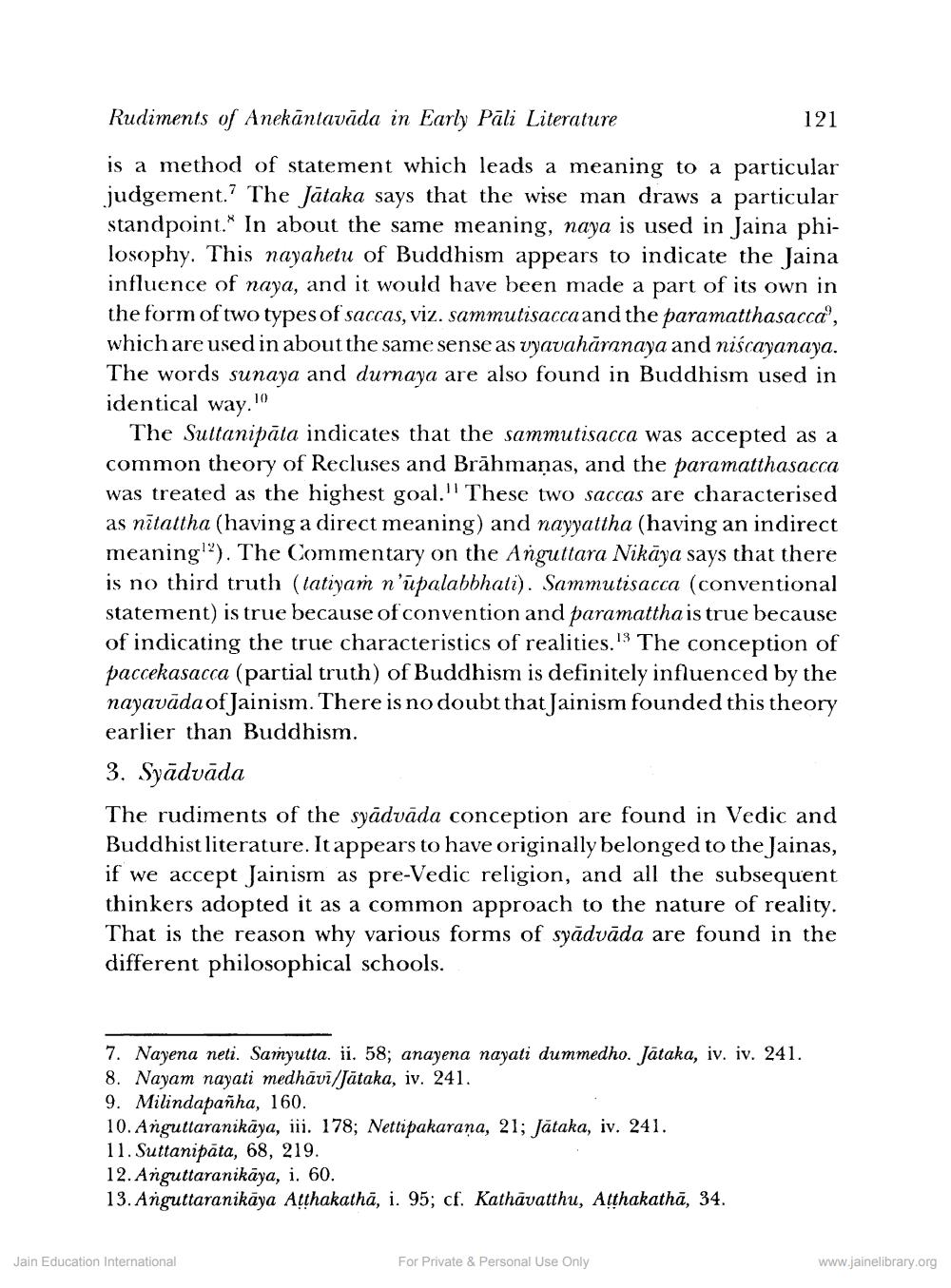________________
Rudiments of Anekāntavāda in Early Pāli Literature
121
is a method of statement which leads a meaning to a particular judgement.? The Jātaka says that the wise man draws a particular standpoint.* In about the same meaning, naya is used in Jaina philosophy. This nayahetu of Buddhism appears to indicate the Jaina influence of naya, and it would have been made a part of its own in the form of two types of saccas, viz. sammutisacca and the paramatthasacca", which are used in about the same sense as vyavahāranaya and niscayanaya. The words sunaya and durnaya are also found in Buddhism used in identical way.10
The Sultanipāta indicates that the sammutisacca was accepted as a common theory of Recluses and Brāhmaṇas, and the paramatthasacca was treated as the highest goal." These two saccas are characterised as nītattha (having a direct meaning) and nayyattha (having an indirect meaning!?). The Commentary on the Anguttara Nikāya says that there is no third truth (tatiyam n'upalabbhati). Sammutisacca (conventional statement) is true because of convention and paramattha is true because of indicating the true characteristics of realities. The conception of paccekasacca (partial truth) of Buddhism is definitely influenced by the nayavāda of Jainism. There is no doubt that Jainism founded this theory earlier than Buddhism. 3. Syādvāda
The rudiments of the syādvāda conception are found in Vedic and Buddhist literature. It appears to have originally belonged to the Jainas, if we accept Jainism as pre-Vedic religion, and all the subsequent thinkers adopted it as a common approach to the nature of reality. That is the reason why various forms of syādvāda are found in the different philosophical schools.
7. Nayena neti. Samyutta. ii. 58; anayena nayati dummedho. Jātaka, iv. iv. 241. 8. Nayam nayati medhāvi/Jätaka, iv. 241. 9. Milindapañha, 160. 10. Anguttaranikāya, iii. 178; Nettipakarana, 21; Jätaka, iv. 241. 11. Suttanipāta, 68, 219. 12. Anguttaranikaya, P. 60. 13. Anguttaranikāya Atthakatha, P. 95; cf. Kathāvatthu, Atthakathā, 34.
Jain Education International
For Private & Personal Use Only
www.jainelibrary.org




